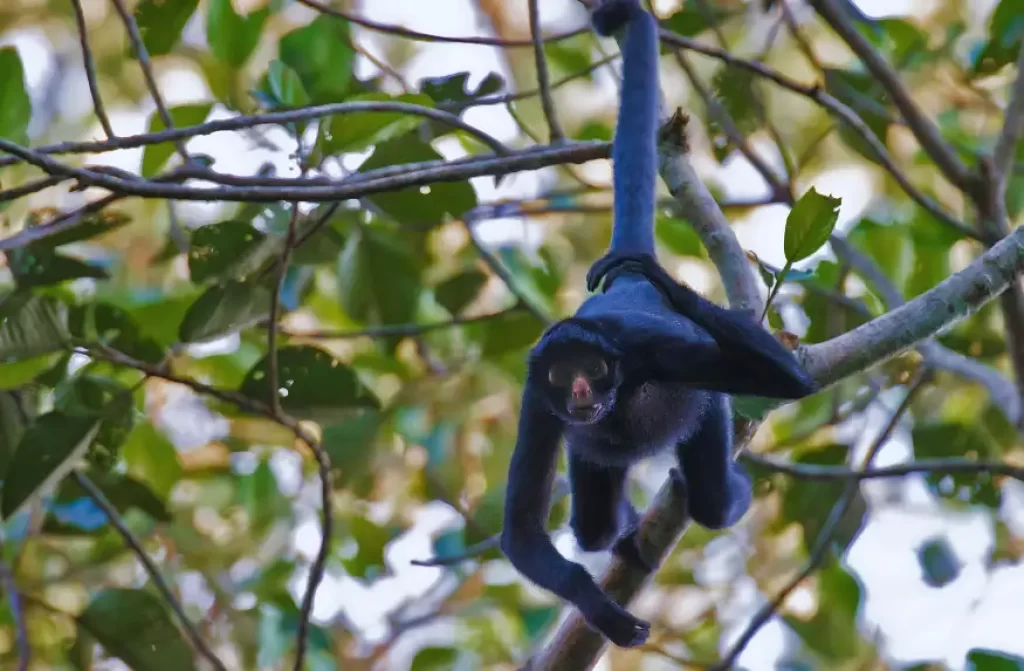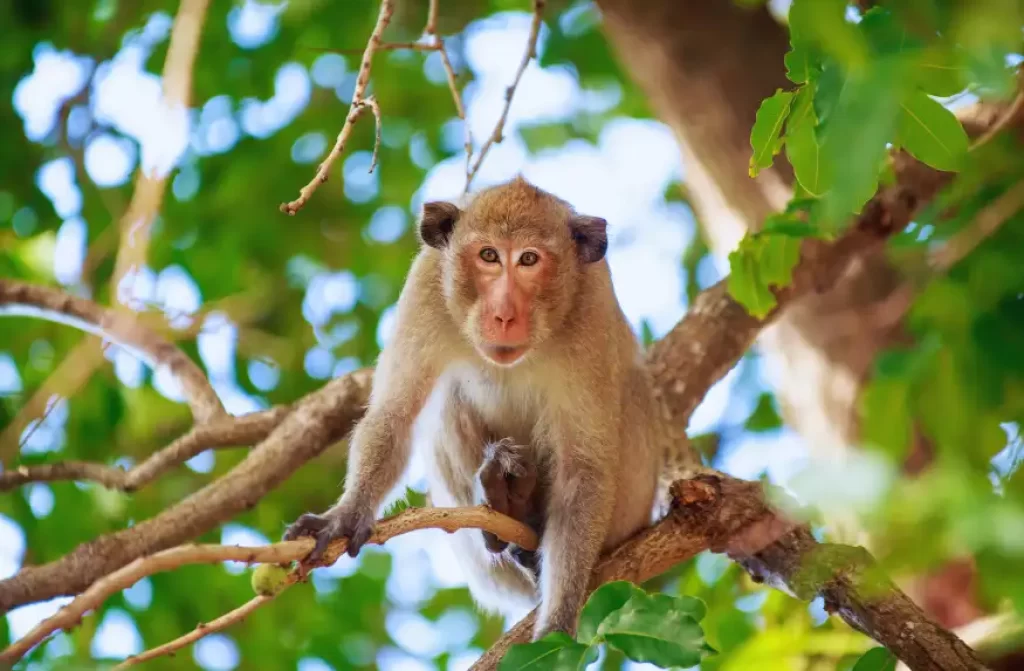When we think of monkeys, we often picture their furry coats and playful antics swinging through trees. But have you ever wondered what color their skin is?
While their fur is undoubtedly eye-catching with its various shades and patterns, the color of their skin might not be as obvious at first glance. In this article, we will explore the intriguing world of monkey skin colors and what makes them unique.
Monkey Fur vs. Skin Color

Monkeys exhibit a wide range of fur colors, including brown, black, white, gray, red, and even blue in some species. This diverse array of fur colors helps them blend into their natural habitats and serves various functions, from camouflage to social communication.
However, when it comes to their skin, monkeys generally have a similar color to their fur. Underneath that luscious coat of fur, their skin color is usually a shade that complements their fur color. For example, monkeys with brown fur will typically have light brown or tan skin, while those with black fur will have dark-colored skin.
Melanin and Monkey Skin

The pigment responsible for skin color in monkeys, as well as in humans, is called melanin. Melanin is produced by specialized cells called melanocytes, which are found in the epidermis, the outermost layer of the skin. The amount and type of melanin determine the color of the skin.
Monkeys living in sunnier regions with more exposure to ultraviolet (UV) rays tend to have darker skin. The increased melanin in their skin provides some protection against the harmful effects of UV radiation, such as sunburn and skin damage.
Adaptations and Environmental Factors

The similarity in fur and skin color is not just a random coincidence. Evolution has played a significant role in shaping these adaptations. Monkey species that live in dense forests, such as the black spider monkey or the Bornean orangutan, often have darker fur and skin to help them blend into the shadows of the forest canopy.
Conversely, monkeys living in open savannas or grasslands, like baboons or vervet monkeys, may have lighter fur and skin to match the sun-drenched landscapes.
One fascinating adaptation is observed in the gelada baboon, which has a patch of hairless skin on its chest.
This patch, known as a “bleeding heart,” is bright red in color and becomes even more vibrant during times of social interaction or during mating displays. This unique display of color serves as a form of communication within the troop.
Variations Across Monkey Species
While the general pattern of matching fur and skin color holds true for many monkey species, there are always exceptions and variations in the animal kingdom.
For instance, the Mandrill, a type of baboon, is well-known for its strikingly colorful face. The dominant males display vividly colored red, blue, and purple skin on their snouts and around their eyes, which serves as a signal of their social status and reproductive fitness.
What color are monkeys’ skin – Video
Check out this video about “What color are monkeys’ skin” to unravel the mysteries behind their enchanting hues. 🎬🌟 Get ready to be amazed and entertained as we explore the incredible diversity of our primate friends
FAQ
What is monkey skin Colour?
The color of monkey skin varies among different species, but it generally matches the color of their fur. Monkeys can have a wide range of fur colors, including brown, black, white, gray, red, and even blue in some cases.
Underneath their fur, their skin color is typically a shade that complements their fur color. For instance, monkeys with brown fur usually have light brown or tan skin, while those with black fur will have dark-colored skin. This adaptation helps them blend into their natural habitats and provides some protection against UV radiation from the sun.
What color skin do primates have?
Primates have a range of skin colors, from light pink to dark brown or black. Melanin, the pigment responsible for skin, hair, and eye color, plays a key role. Primates living in sunnier areas tend to have darker skin for UV protection, while those in less sunny regions may have lighter skin.
Some primates, like mandrills and geladas, display vibrant facial colors for communication and social status. The diversity in their skin color adds to the fascinating variety seen in the animal kingdom.
Do chimpanzees have pale skin?
No, chimpanzees do not have pale skin. Chimpanzees have dark skin, which ranges from black to dark brown. Like other primates, their skin color is influenced by the presence of melanin, a pigment that provides protection against the harmful effects of ultraviolet (UV) radiation from the sun. The dark skin helps to shield them from sunburn and skin damage.
Conclusion
So, the next time you observe a monkey swinging through the trees or grooming its fur, take a moment to appreciate the harmony between its skin and fur colors.
The close connection between these features not only showcases the wonders of nature but also provides valuable insights into how these intelligent creatures have adapted to their diverse environments.
Whether they sport earthy tones to blend into the forest or display vibrant colors to assert their dominance, monkey skin colors offer a fascinating glimpse into the rich and complex world of these incredible animals. As we continue to study and admire these creatures, let’s celebrate the beauty and diversity of nature’s designs.







